
50 Years Ago: UNM-Gallup offers Diné bizaad course
The University of New Mexico branch in Gallup had finally realized that there were a lot of Navajo out there really interested in learning their own language. For the first time, the college was offering a course on how to speak Navajo. The college sent the Navajo Times a short announcement about the new course and said later that the response was “overwhelming.”
There were three classes offered with a total of 50 seats available and, according to college officials, two days after the article appeared in the newspaper, all 50 seats were filled and the college had a waiting list of more than 20 names. Most of those who signed up were Navajo students at the college. The classes offered three college credits and cost $52.50 a semester.
Those who audited the class, taking the class for knowledge and not grades, paid a little less, I guess because teachers did not have to grade tests. “Teachers” is the wrong term here since the college only had one teacher offering this course – Alan Wilson, who would go on to teach Navajo at the college for more than 30 years.
He also would go on to write several books dealing with the Navajo language, including books translating medical terms into Navajo and another one on the meaning of Navajo place names. I was told that Wilson had a greater knowledge of the language than almost any Navajo but, like most non-Navajos who spoke the language, he could not totally capture its cadence like most Navajos did who had grown up with Navajo as their first language.
Wilson claimed to be fluent in eight languages and capable of getting by in five more. I remember he said he was fluent in German, French and Latin as well as Navajo and English. I also remember him saying he had a working knowledge of Apache but, at the time, he was planning to spend more time learning the language because it was so close to Navajo, so he could have become fluent in that language before he died.
He was also fluent in one of the Chinese dialects, which came in handy because he took many trips to parts of China over the years, sometimes with a group of people from this area. I don’t know if this was original with him but he was the first one to tell me about the Navajo relationship with the people in China. He claimed that in his travels to areas in northern China, he came upon some people who spoke a dialect that had some similar words to Navajo.
I remember interviewing him for the Navajo Times in the 80s when one of his books was just published. We had a long discussion about his Navajo language course, which became the basis of several stories I wrote for the Times during that period. By that time, he had a couple hundred non-Navajos taking his Navajo language course.
He said he could count on one hand the number of non-Navajos who managed to get even a passable ability to speak and understand Navajo. Over the years, several reporters for the Gallup Independent took Wilson’s class and the best they could do was to say a few sentences in Navajo as well as to recognize 50 or so Navajo words.
I was one of those reporters. Shortly after I started covering the reservation in 1971, I signed up to take a Navajo language course at St. Michaels being taught by one of the priests at the mission. I went in knowing there was no hope of being able to speak or understand the language. I had taken Latin and French in high school and the only thing I was able to say was “Il y a une dragon sur mon lit,” which translates to “There is a dragon in my bed.”
Fifty-five years later, I am still waiting for an opportunity to use this in a conversation to impress someone with my ability to speak French. As for my class in Navajo, I came out of it with the ability to recognize a word here and there if the person is speaking slowly.
I remember enjoying listening to Peter MacDonald speak in Navajo because of his cadence and ability to emphasize certain words, giving me a chance to recognize a word here and there. Back in 1978, I was managing editor of the Times and had to attend a Budget and Finance Committee meeting along with my supervisor, Sam Day, who was director of business development for the tribe. I was sitting at the table with the important people instead of along the wall where the lowly reporters sat.
Day and the committee members had been speaking about the upcoming budget for the Times solely in Navajo for more than 30 minutes and my brain was wandering. Suddenly I heard Day say in Navajo, “This is gong to take time.” And I understood what he had said because that was one of the Navajos phases I had heard repeated over and over again in my Navajo language course.
I perked up and Day saw me and began laughing as he explained to the other committee members that I finally heard something I understood. Another thing I remembered Wilson say was that Navajos who grew up not hearing Navajo spoken were in the same boat as non-Navajos in their ability to learn Navajo. So in 2013 when Christopher Deschene was going through his own problems in getting on the ballot to run for tribal president, I could understand what he was going through.

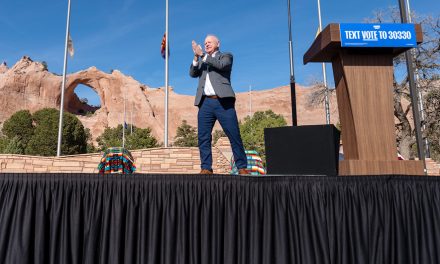

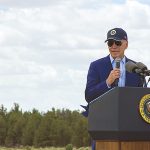
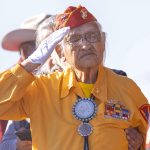
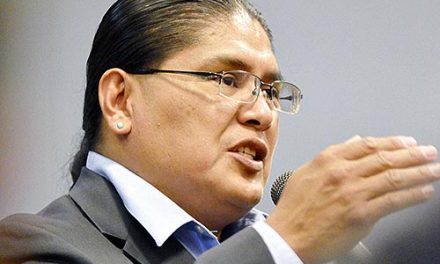


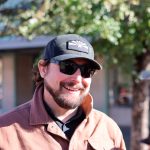

 Highway 264,
Highway 264, I-40, WB @ Winslow
I-40, WB @ Winslow